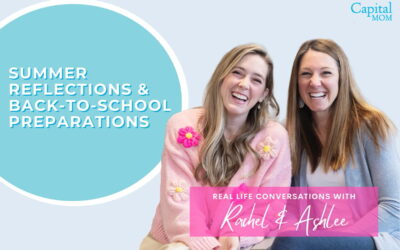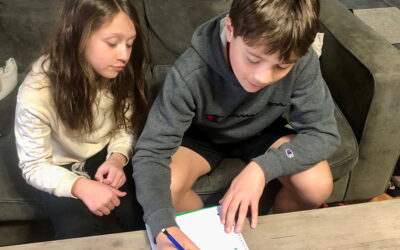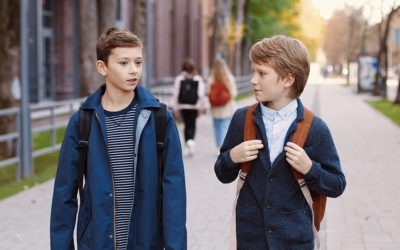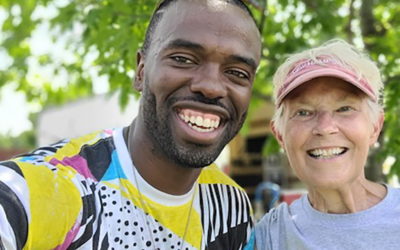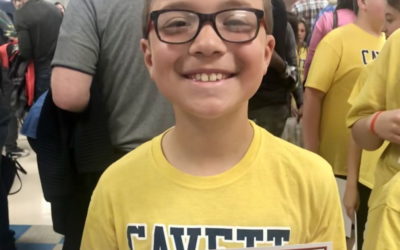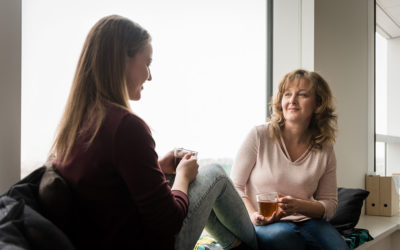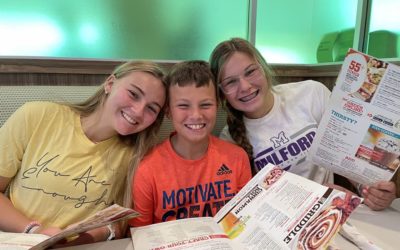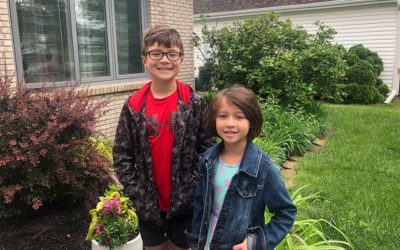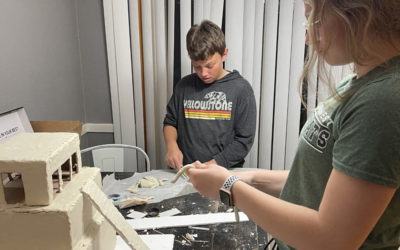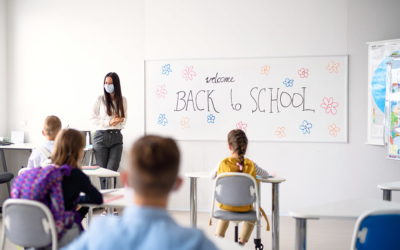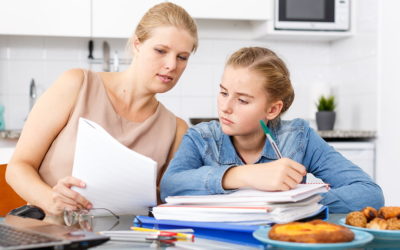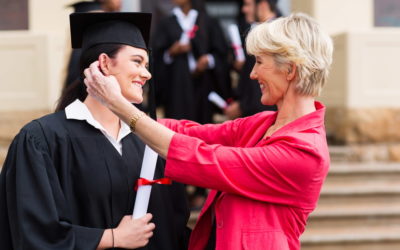Traveling with little ones is an adventure in itself, and taking my two-year-old, Zoey, and four-year-old, Max, to Disney World was no exception! From navigating airport security with a stroller to keeping them entertained on the flight, I learned a lot about what...
School
Choosing a preschool, managing first-day jitters, battling homework struggles and even going back to school as a parent. Education comes with big decisions. You don’t have to navigate them alone. Get real-world tips to help you and your student succeed.
Summer Reflections & Prepping for Back to School
This week, we're going to roll into a tribute to summer and talk about getting into the swing of back to school. Our Summer Glimmers & Dimmers But first, let's go ahead and start with our glimmer and our dimmer. Rachel's July Glimmer My glimmer this month is my...
What to Do If Your Kid Lacks Motivation About School
Sometimes it feels like our kids really don’t care about school. Even when they’re smart and underachieving, or especially when they’re failing school, it’s not as simple as not caring about school. A Shift in Collyns' Approach to Schoolwork Collyns, who is in fourth...
Life Lessons Beyond the Cap & Gown
Three of our four grandkids have received their bachelor’s degree. This past weekend, one of those three received her master's degree. Reflections on Aging at Graduation I keep telling myself, "I’m too young for this. Stop the clock of life. Time is moving too...
How Strict Is Too Strict?
You’re either strict or you’re not, with very little consideration for the large grey area in between. If you could place these two descriptions on a parenting scale, you might see “strict” at the same end as authoritarian and “non-strict” at the same end as...
Helping My Son Make Middle School Friends
One quarter down and Cohen is doing great in middle school. He takes pride in his schoolwork, and really enjoys most of his classes, but hates it. He dreads going every day! I am not worried about his grades; he is getting all A’s. Even though he says middle school is...
Reconnecting With My Substitute Grandkids
The weekend of June 18 was certainly a fun one for me. It was filled with my involvement in a couple of community activism events. I’ve always worked hard to include my grandkids in my community activities. We marched in the Martin Luther King Youth Rallies for years,...
Getting Ready for Middle School
Middle school. Just saying the words brings me thoughts of puberty and pimples. Of insecurity and awkwardness, including bad hair and braces. Really, middle school years, I believe may be the most challenging and confusing time in one’s life. However, the idea of...
How I Work to Inspire High School Students
As a principal, my husband gives many talks to the students throughout the year. Most times the talks are informational and to remind students of expectations but there are times when the talks are inspirational. During any one of these talks the students and teachers...
Is She Trying?
School is supposed to be a fun time where children learn new and exciting things about themselves and the world around them. But sometimes children can lack motivation in school and not give it their best effort. As parents, all we want is to see our children succeed...
Helping Our Kids Understand They Can Do Hard Things
There is a sign above my classroom door: “You Can Do Hard Things”. I see it every time I look up from my desk, walking around my classroom, or standing at the front of the room. The past handful of weeks, this statement has really struck a nerve with me. I find myself...
Sending Our Daughter Off to College
"Good parents give their children roots and wings. Roots to know where home is, wings to fly away and exercise what's been taught to them." - Jonas Salk As we walk the path of parenting, I'm sure you've read or heard this quote many times. Lately, a version of this...
Falling Behind in School
Here we are at the end of another school. Cohen finished 4th grade and Collyns completed 1st grade. Cohen excelled this year and continues to work very hard. Collyns however, struggled, but is it because of Covid-19 and remote learning last year? Everyone is worried...
Learning the Importance of Teamwork Through Group Projects
Few of us ever work alone in our lives. We brainstorm and discuss new ideas, we collaborate, and in some instances, we ask for help. For many of us, we welcome working with others; yet there are also times where we would rather scream, “just let me do it alone.” Trust...
Tackling School Drop-Off
Patience. As parents, we need A LOT of it. I blog a lot about household stuff—laundry, chores, how I try to be a good mom—but today this one is about school drop-off. Since the weather outside is cold, more and more parents are taking their children to school—me...
How the First Day of School Was Different this Year
Anxious. Nervous. Not ready at all. Excited. Overwhelmed. Ready. My emotions and thoughts were all over the place as I prepared for the first day of school. The planner in me was not prepared for any day beyond the first day. I was even more nervous knowing that the...
Sending Our Daughter Off to College
I remember it quite vividly. It was the second Sunday in cold, cold January, and I was sitting on the couch sobbing uncontrollably on my mom’s shoulder. I didn't want to go back to college. I had a rough first semester of college and was about to embark on a new...
School’s Out, But the Learning Continues
During my morning walk, I caught myself reminiscing about being in the school building with students and missing everything about it. Not only do I miss teaching, but my kids miss school, their friends and the activities. And, all I can do is plan for and hope that we will be back in school buildings this fall. Without thinking too far in advance, we must experience summer first.
Scholarships Season Is Stressful
It's snowing outside, the Christmas lights are shining bright on the tree, and I am sitting in the recliner enjoying my cup of hot cider watching holiday movies. I'm enjoying the silence and reminiscing about the most wonderful time of the year. Then I hear it, “Mom,...
Parent-Teacher Conferences
Just the phrase “parent-teacher conference” makes me anxious. However, this last experience was a positive one. Typically, parent-teacher conferences happen either right before or right after report cards. And with grades in the picture, the stakes are raised.That...
Traveling Through Life with My Squad
The group text message went like this:“Okay squad...I am 95% sure I want a tat. Who also needs one? I need my squad for moral support to get me through the door.”“I am definitely out for the tattoo, but can be there for moral support.”“I am in!!! I want one with my...
The Senior Year To-Do List
Some combination of the following statement is often said over and over, “Don’t blink. Your children grow up way too fast, before you know it they will be a _______ (fill in the blank.)”Here we are with a senior daughter. She did grow up way too fast. I realized I...
A Favorite Educator’s Legacy Lives Beyond Retirement
As a high school student, I never really paid attention to the duties of the superintendent. I knew he lead our school and made important decisions, yet, I never fully comprehended what his daily duties included. However, I did make sure to pay attention when he would...
Ways to Make Summer Reading Not Feel Like Homework
Ah, summer—the sun is hot, school is out, energy is high, and let's face it, for parents this can be a challenging time. Not only does your routine change, but it’s also difficult to keep your kids reading.Does “summer school work” sound like a chore to your kids?...
How to Get Ready for Prom
I remember it like it was yesterday: the curled pigtails, the little white dress, the big smile, the small basket of flowers. Our daughter looked like a princess walking down the aisle with the other flower girl and ring bearer. I remember saying to my husband, “Before we know it, she will be going to her high school prom.”
I Want My Mommy
Some children say goodbye and hop right into the classroom without a backwards glance. Others have a hard time leaving the protective arms of the parent. Sometimes, it's the parent who has a hard time letting go. My daughter Collyns has a touch of separation anxiety....
My Husband’s Going Back to School
This blog is written for my husband. Most fathers don’t receive the credit they deserve. Well, at least mine doesn’t. When we got married nine years ago, we decided to have kids right away. We just didn’t think it would happen quite so fast. We were thrown into parenthood at the age of 24 and on our first wedding anniversary we had a one-month-old. My husband thrived as a dad. When our daughter was born we thought we had this parenting this down. And then we thought “why not add more to our plate!”
The Importance of Student Organizations
The first day of school is one of my favorite days of the year. The excitement of back-to-school photos, seeing students walk into our building for the new school year and listening to their favorite summer memories fills my heart with joy.
It’s Okay to Ask for Help
Even when I solicit input from my trusted and valued advisers — aka “my best mom friends” — I make the decisions and suffer the consequences. I addressed my son’s issues at school in my previous blogs — to be honest, he hates it. He hates talking about school,...
Is Your Child’s Backpack a Health Risk?
Did you know that 55 percent of students are wearing backpacks that are too heavy for their body? Take the load off your kids and make sure they are wearing the right backpack properly. Improper backpack use has led to more reports of back pain in children. It is...
Use Our Symptom Checker
Whether it’s a rash, your child’s ear pain or your aching back, our symptom checker can help determine what to do. Just answer a few questions about your symptoms and receive recommendations for care.
Find a Doctor
Find the right provider for you. Search by specialty, view provider videos and even schedule an appointment online. Life’s busy, we make finding a provider fast and easy to fit your schedule.
Stay Informed for Your Health
You and your family are unique. At Bryan Health, we have a variety of classes, events, podcasts and more for all stages of life.
To stay in the know, subscribe to our monthly For Your Health email!
Tune in to…Bryan Health Podcasts
Our 10-minute podcasts provide practical, useful advice for a lifetime of good health.
And they’re easy to listen to while you’re on the go, at work or at home. Listen to or download a free podcast today!
Register for the Bryan Baby App
Access pregnancy, childbirth and newborn care resources anytime, anywhere.
The Bryan Baby App includes the tools and support you need at every stage of your pregnancy journey and beyond.



